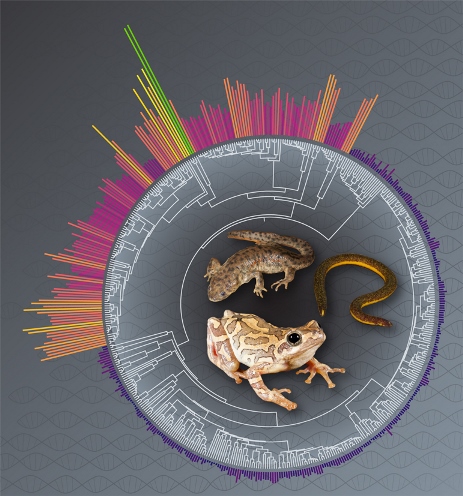Genome size varies enormously from one species to another, and amphibians are the group of vertebrates where genome size varies the most. Amphibians are also really old lineages that have been evolving for millions of years, diversifying and adapting to highly contrasting environments, from the warm and humid tropics to cold regions at high latitudes or high elevations. Amphibians have also evolved a frenzy of reproductive modes ranging from the well known case of aquatic tadpoles that metamorphose into terrestrial juveniles to direct developers that skip the larval phase and hatch from terrestrial eggs directly as terrestrial juveniles. Comparative phylogenetic analyses were used to test if such a dramatic evolutionary history has had any consequences for the evolution of genome sizes in amphibians. It resulted that amphibian genomes have undergone saltations in size, although these are rare and the evolutionary history of genome size in amphibians has otherwise been one of gradual differentiation. This macroevolutionary homogeneity is remarkable given the evolutionary and ecological diversity of most other aspects of the natural history of amphibians. No evidence was found for associations between life cycle complexity and genome size despite the high diversity of reproductive modes and the multiple events of independent evolution of divergent life cycles in the group. Species with fast development show reduced genome sizes. Also, climate affects genome size indirectly, at least in frogs, as a consequence of its effect on development. informacion[at]ebd.csic.es: Liedtke et al (2018) Macroevolutionary shift in the size of amphibian genomes and the role of life history and climate. Nature Ecol Evol. DOI: 10.1038/s41559-018-0674-4
https://www.nature.com/articles/s41559-018-0674-4

 Las altas temperaturas están provocando que las lagunas y las marismas de Doñana pierdan agua rápidamente
Las altas temperaturas están provocando que las lagunas y las marismas de Doñana pierdan agua rápidamente




